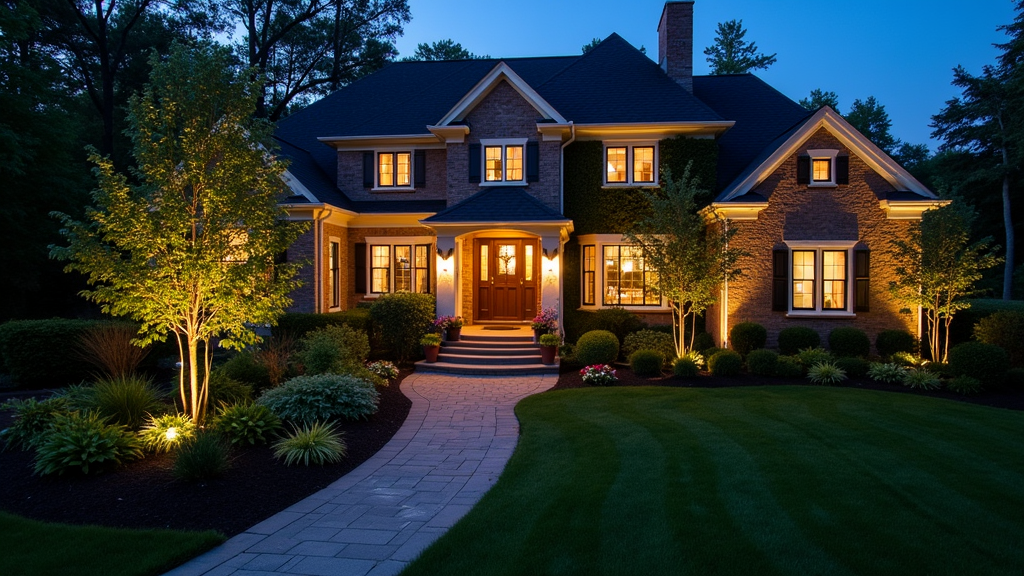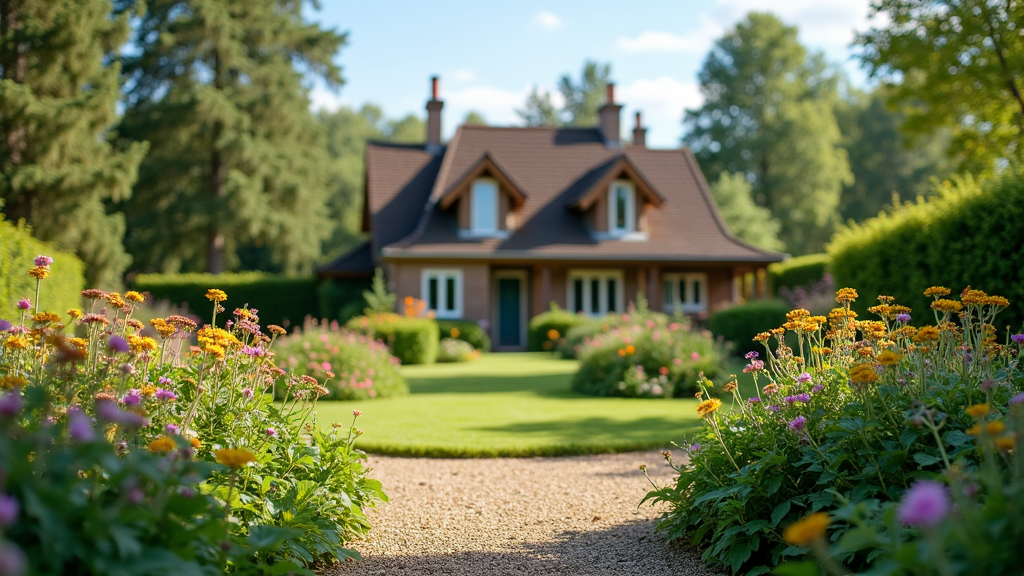Introduction
When the sun sets and darkness envelops your outdoor space, the beauty of your landscape can quickly morph into a hazardous environment. Uneven pathways, lurking shadows, and unmarked obstacles become potential traps waiting to ensnare the unsuspecting. That's why understanding how proper landscaping can prevent accidents at night is crucial—not only for aesthetics but also for safety.
In this comprehensive guide, we'll explore a variety of strategies and features that can transform your outdoor area into a safe haven after dark. From effective landscape lighting solutions to the importance of maintaining clear pathways, we’ll delve deep into how thoughtful design choices can mitigate risks and enhance both functionality and beauty.
Safety First: How Proper Landscaping Can Prevent Accidents at Night
Understanding Outdoor Hazards
What constitutes an outdoor hazard?
Outdoor hazards can range from slippery surfaces to hidden tripping points caused by uneven ground or poorly placed garden decorations. Recognizing these potential dangers is the first step toward creating a safer landscape.
Common Types of Outdoor Hazards
Uneven Pathways: Cracked sidewalks or stones that are not leveled can create significant tripping hazards. Poorly Lit Areas: Dimly lit zones may hide obstacles like tree roots or garden beds. Sharp Edges: The edges of stones or metal decorations can pose risks if someone stumbles. Overgrown Vegetation: Bushes or plants that encroach upon walkways can obstruct visibility.The Role of Landscape Lighting
Why is landscape lighting important for safety?
Landscape lighting serves multiple purposes, primarily enhancing visibility during nighttime hours. By illuminating pathways and highlighting potential hazards, you drastically reduce the chances of accidents.
Types of Landscape Lights
Pathway Lights: These fixtures line walkways and provide essential illumination where it’s needed most. Spotlights: Pointing towards trees or architectural features, these lights add ambiance while ensuring visibility. Wall Lights: Mounted on walls or fences, they help in marking boundaries and providing additional light to gathering areas.Choosing Quality Landscape Lights
When selecting landscape lights, consider these factors:

- Lumens Output: Higher lumens mean brighter light; choose according to your needs. Energy Efficiency: Opt for LED lights that consume less power yet provide ample brightness. Durability: Ensure lights are weather-resistant to withstand outdoor conditions.
Designing an Effective Lighting Plan
Creating an effective lighting plan involves strategic placement:
Identify high-traffic areas such as paths leading to entrances. Highlight steps, ramps, and other changes in elevation with focused lighting. Illuminate any potential hazards like low-hanging branches or garden beds.Maintenance Matters: Keeping Your Landscapes Safe
Regular maintenance is key to preserving safety in your landscape:
- Trim overgrown vegetation regularly to maintain clear sightlines. Check pathway integrity; repair any cracks or uneven surfaces promptly. Replace broken lights immediately to ensure consistent visibility.
The Importance of Clear Pathways
Creating Defined Walking Areas
Why are defined walking areas crucial?
Defined walking areas guide visitors through your property safely while discouraging wandering into potentially dangerous spots.
Tips for Designing Clear Pathways
Use contrasting materials for pathways versus surrounding landscapes. Install physical borders like small fences or hedges to delineate paths clearly. Opt for natural stone or brick pavers that provide a stable surface.Maintaining Pathway Integrity
Regular inspections should be part of your routine:
- Look for cracks or uneven surfaces that could lead to trips and falls. Ensure there’s no obstruction from plants or furniture along the pathway.
Utilizing Natural Elements Wisely
Natural Barriers vs. Hardscaping Elements
Natural barriers such as shrubs can be used effectively alongside hardscaping elements like fences:
- Shrubs can serve as visual cues while softening harsh lines created by structures. Fences should be appropriately lit if they form part of a boundary near walkways.
Strategic Plant Placement
Think about where you place plants:
Avoid planting too close to paths; instead, create a buffer zone with low-maintenance ground cover. Choose low-growing plants near walkways so they won’t obscure lighting fixtures’ effectiveness.The Impact of Color Schemes on Safety
Using Color Psychology in Landscaping Design
Did you know colors affect visibility? Bright colors are easier to see at night compared to darker shades; thus, incorporating lighter hues strategically can improve safety.
1. Choosing Light-Colored Materials
Light-colored gravel or pavers reflect more light than their darker counterparts, making pathways more visible.
2. Contrasting Colors
Utilizing contrasting colors between different elements (like flowers against green foliage) enhances recognition during twilight hours.
Incorporating Technology into Landscape Safety
1. Smart Outdoor Lighting Solutions
With advancements in technology, smart outdoor lighting systems allow homeowners the convenience of controlling their lights remotely via smartphones.
Benefits include:
- Automatic adjustments based on sunset times Motion sensors that activate lights when approached
2. Solar-Powered Options
Solar-powered landscape lights offer eco-friendly benefits while eliminating wiring concerns—making installation simpler without sacrificing safety features!
Landscaping Techniques That Promote Safety at Night
1. Ground Cover Plants
Ground cover plants not only beautify but also stabilize soil around pathways—reducing erosion that could expose hidden trip hazards underneath!

2. Raised Garden Beds
Raised beds keep plants contained while offering clear sightlines across gardens—making them functional yet visually appealing additions!
FAQs About Landscaping Safety at Night
Q1: How does landscape lighting improve home security?
A: Well-lit properties deter intruders since darkness often provides cover for unwanted activities.
Q2: What types of bulbs are best for landscape lights?
A: LED bulbs are preferred due to their long lifespan and energy efficiency—they're cost-effective in the long run!
Q3: Can I install landscape lighting myself?
A: Yes! DIY installations are achievable with basic electrical knowledge; however, hiring professionals ensures compliance with local codes and safety standards.
Q4: How much does professional landscaping maintenance cost?
A: Costs vary based on location and scope; typical expenses range from $50-$150 per hour depending on services rendered!
Q5: Are solar-powered outdoor lights effective?
A: https://www.ramirezlandl.com/contact Absolutely! They’re dependent on sunlight exposure but generally perform well during summer months with adequate charging time!
Q6: Can poor landscaping lead directly to accidents?
A: Yes! Overgrown areas obscuring paths combined with inadequate lighting create unsafe conditions for anyone navigating after dark!
Conclusion
In conclusion, landscaping goes beyond aesthetics—it plays a pivotal role in ensuring safety after dusk falls upon our homes and gardens! By implementing thoughtful design choices such as effective landscape lighting solutions alongside regular maintenance practices, we create welcoming environments that prioritize our well-being while still capturing nature's beauty beautifully!
So remember folks—when it comes down tonight’s adventures outdoors… always prioritize “Safety First: How Proper Landscaping Can Prevent Accidents at Night!” Your friends—and ankles—will thank you later!